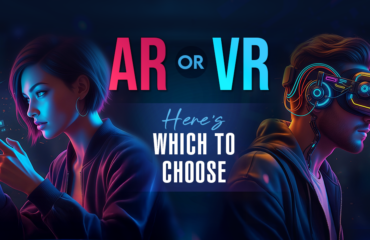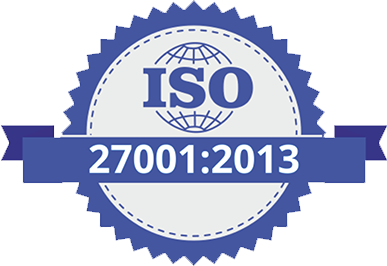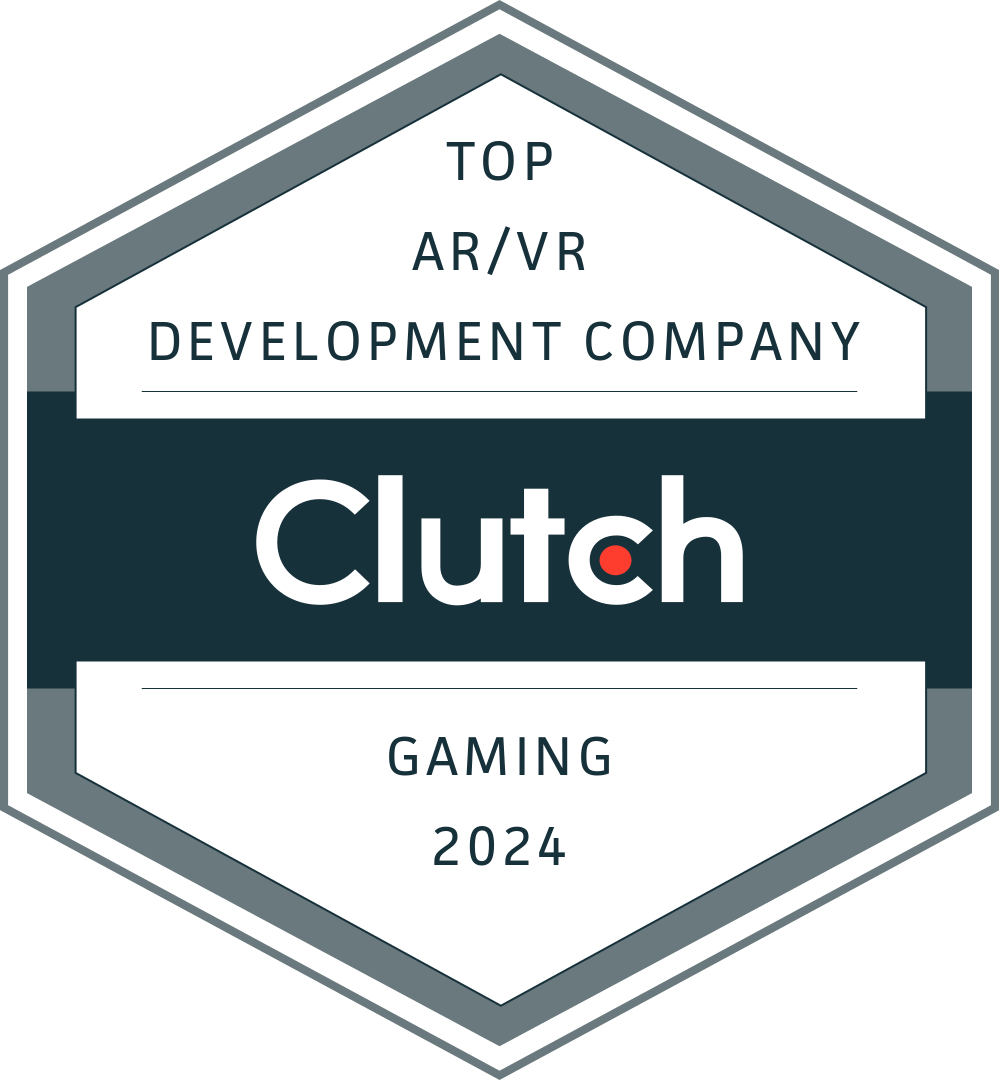
Unity, one of the most widely used game development platforms, has continually raised the bar for game graphics. Over the years, Unity has made significant strides in graphics capabilities, evolving from its humble beginnings as a tool for indie developers into a powerhouse used by AAA studios. The latest developments in Unity’s graphics technology offer a glimpse into the future of interactive media, from gaming to real-time simulations and even cinematic productions.
This blog will explore the cutting-edge advancements in Unity graphics, including real-time ray tracing, improved visual fidelity, and the role of AI and machine learning in optimizing performance. Additionally, we’ll look at the future trends and innovations that will shape the future of Unity development. Finally, we’ll highlight Red Apple Technologies’ expertise in Unity game development and how they stay at the forefront of this evolving field.
Unity’s Graphics Evolution: From 2D to 3D and Beyond
Unity’s graphics capabilities have been progressively refined to keep pace with industry demands and new technological developments. Historically known for its accessibility and ease of use, Unity has enabled gaming app development companies of all sizes to create immersive experiences. Today, Unity offers one of the most robust ecosystems for real-time 3D rendering and visual fidelity.
Early Unity games often had a “cartoony” aesthetic due to the platform’s limitations with real-time 3D rendering. However, with the introduction of Unity 5, the game engine experienced a major leap forward by including the physically-based rendering (PBR) pipeline. This allowed developers to create far more realistic lighting, reflections, and materials, bringing the engine closer to industry-standard tools.
The transition to Unity 2020 and later versions introduced even more substantial changes, such as the High Definition Render Pipeline (HDRP), a modular system designed for high-end platforms. HDRP enables developers to create stunning visuals for next-gen gaming hardware, such as the PlayStation 5 and Xbox Series X, along with a more optimized experience for PC gamers.
Key Graphics Innovations in Unity
-
Real-Time Ray Tracing
Ray tracing, a technique previously reserved for offline rendering in films and animations, is now a key feature in Unity’s graphics toolbox. With real-time ray tracing becoming an industry standard for high-end gaming graphics, Unity’s adoption of ray-traced reflections, lighting, and shadows has raised the realism of games to new heights. Ray tracing simulates the behavior of light more physically, resulting in better reflections, refractions, and more accurate shadow rendering.
Unity supports ray tracing through the HDRP, enabling developers to create highly realistic environments with reflections on water surfaces, glass, or other reflective materials. Although ray tracing is computationally expensive, Unity’s integration with NVIDIA’s DLSS (Deep Learning Super Sampling) and AMD’s FSR (FidelityFX Super Resolution) helps maintain high frame rates without sacrificing visual quality. As hardware continues to evolve, real-time ray tracing will become more accessible and prevalent in mainstream gaming.
-
The Universal Render Pipeline (URP)
While HDRP is focused on high-end graphics, Unity’s Universal Render Pipeline (URP) is aimed at a broader range of devices, from mobile phones to consoles. URP is optimized for performance, making it possible to run graphically demanding games on lower-powered hardware without compromising too much on visual quality.
With features like lightweight shaders, optimized post-processing effects, and better support for mobile GPUs, URP is quickly becoming the go-to choice for developers working on cross-platform games. The URP’s ability to scale the quality of visuals based on the target platform makes it incredibly versatile, which is one of the reasons it is gaining traction for both indie developers and large studios.
-
AI and Machine Learning for Graphics Enhancement
Artificial intelligence (AI) and machine learning (ML) are being leveraged in Unity’s graphics stack to optimize both rendering and performance. Unity has introduced several tools to enhance graphics workflows using AI. For example, Unity’s ML-Agents toolkit enables developers to integrate machine learning into their games, creating more dynamic environments and intelligent NPCs.
Moreover, AI is being used to enhance real-time visual fidelity. Tools like Unity’s Adaptive Performance help developers dynamically adjust graphics quality based on the performance capabilities of the hardware, providing a smoother experience for players while reducing the need for manual optimization.
-
Post-Processing Effects and Advanced Visuals
The recent versions of Unity have improved the ease and flexibility of applying post-processing effects such as bloom, depth of field, motion blur, and color grading. The Post-Processing Stack in Unity allows for more granular control over visual fidelity and offers a wide array of effects that can be tailored to fit any game or visual style.
Unity’s support for physically accurate simulations has also contributed to improving graphics. The inclusion of systems like VFX Graph (for particle effects) and the Shader Graph (for creating custom shaders visually) has democratized the process of creating high-quality visual effects without needing to have deep programming knowledge.
-
Lighting and Global Illumination
Unity’s advancements in real-time lighting and global illumination (GI) are also noteworthy. The introduction of Enlighten and improved baked and real-time GI solutions has allowed developers to achieve more realistic lighting scenarios in games. In addition, Unity’s support for the latest industry standards, such as the OpenGL and Vulkan APIs, provides enhanced lighting and material rendering that make environments feel more lifelike.
For developers working on more visually demanding experiences, Unity offers integration with advanced lighting technologies, such as ray-traced global illumination, which can simulate complex light bounces more accurately than traditional methods.

What’s on the Horizon for Unity Graphics?
As Unity continues to innovate, the future of game graphics looks even more exciting. Key developments we can expect in the future:
-
The Integration of More Advanced AI Techniques
The integration of AI could play a larger role in how games are rendered, from predictive graphics rendering to AI-based art generation. The use of AI could also extend to creating more interactive environments where the world reacts to player actions in more nuanced and intelligent ways.
-
Virtual Reality (VR) and Augmented Reality (AR) Graphics
Unity has long been a major player in the VR and AR space, but as the hardware improves, the graphics capabilities of VR and AR are expected to rise dramatically. Future Unity versions will likely incorporate enhanced tools for these mediums. It shall enable game owners to create immersive and photorealistic experiences with the help of an Unity game development company.
-
Improved Cloud-Based Rendering
With cloud computing becoming more powerful and accessible, Unity will likely leverage cloud-based rendering to offload resource-intensive computations, allowing for more visually complex games and simulations that can run on lower-end devices. This would open up new possibilities for mobile and VR development.
-
Enhanced Ray Tracing and Path Tracing
While ray tracing is already making a significant impact in games, path tracing (which takes into account the path light follows across the scene) could be the next frontier. Unity is likely to continue improving its ray tracing support to take full advantage of the next generation of GPUs.
Red Apple Technologies’ Expertise in Unity Game Development
Red Apple Technologies is at the forefront of Unity game development, offering a wealth of experience in creating innovative, high-quality games with stunning visuals. Whether working on mobile, PC, console, or AR/VR projects, Red Apple Technologies harnesses Unity’s latest graphics tools to deliver exceptional experiences. Our expertise in real-time rendering, ray tracing, AI integration, and cross-platform optimization ensures that every project they undertake pushes the boundaries of what’s possible in Unity.
As Unity continues to evolve, Red Apple Technologies remains committed to staying ahead of the curve, utilizing cutting-edge technologies and trends to bring the most immersive and visually spectacular games to life.
In conclusion, Unity’s graphics advancements have fundamentally transformed how developers create interactive experiences. With innovations like real-time ray tracing, AI integration, and optimized rendering pipelines, Unity is positioning itself as the leading engine for next-generation gaming. For developers looking to push the envelope on visual quality, Unity offers an unparalleled toolkit, and companies like Red Apple Technologies are ready to turn these tools into breathtaking, world-class games.
To Have A Better Understanding On This Let us Answer The Following Questions
What are the emerging trends in Unity graphics that businesses should be aware of?
Answer: The latest trends in Unity graphics comprise the integration of AI technology, real-time Ray Tracing, The Universal Render Pipeline, cloud-based rendering, and so on. But to ensure the proper utilization of this game engine, you need to seek help from an established gaming app development company like Red Apple Technologies.
How is Unity’s focus on next-gen graphics reshaping the gaming industry?
Answer: The next-gen graphics of the Unity game engine are allowing businesses to streamline their development workflows, integrate high-quality visuals, ensure cross-platform compatibility, and much more. But to leverage the potential of the advanced graphics, you need to connect with an experienced Unity game development company.
What ROIs can businesses expect from Unity’s high-end graphical features?
Answer: Investing in the advanced graphical features of the Unity game engine, businesses can retain a huge gaming population, increase brand visibility, gain a competitive advantage, and much more. But to utilize the cutting-edge graphical features of Unity, seek help from a top-rated game development agency.






























 Book an Appointment
Book an Appointment Get Instant Project Estimation
Get Instant Project Estimation WhatsApp Now
WhatsApp Now






 Book An Appointment
Book An Appointment WhatsApp
WhatsApp







